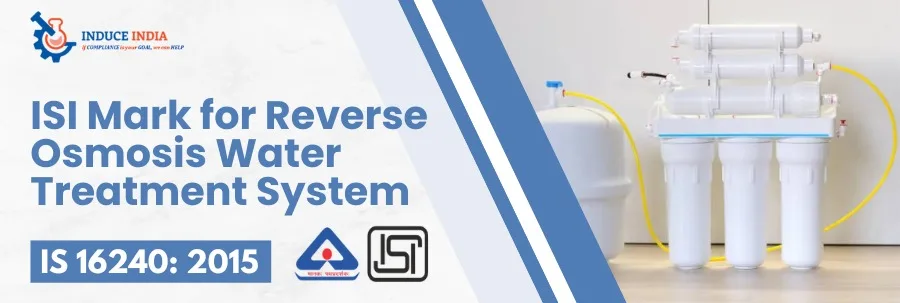Reverse Osmosis (RO) water treatment systems are also known as water purifiers. These water treatment systems are rapidly becoming the preferred choice of many households in the market due to their use in reliable water filtration.
Due to increasing demand in the market various industries are entering the RO technology-based water treatment field. This progress highlights the imperative to establish a standardized framework for RO-based water treatment systems. Considering this, the Bureau of Indian Standards (BIS) has set Indian Standard IS 16240:2015 for reverse osmosis (RO) point of use (POU) water treatment systems.
Reverse Osmosis is a technology employed to eliminate a vast majority of water contaminants by exerting pressure to force water through a semi-permeable membrane.
The manufacturers must ensure the standard’s specifications during the design and construction of the RO system and when it subjected to testing as per IS 9845, materials that come into contact with water must not introduce extractable impurities exceeding the permissible limits for different types of plastic materials.
Here are the major points shall be performed in accordance with the method specified in the standard during testing of RO System:
1. Reject Water Control Mechanism Test.
2. TDS Reduction Test.
3. Percentage Recovery of Product Water Test.
4. Hourly Production Rate Test.
5. Current Leakage Test.
6. High Voltage Test.
7. Type Pressure Test (Hydrostatic Test).
8. Routine Pressure Test (Pneumatic Test).
9. Chemical Reduction (Copper, Iron, Nitrate) Tests.
Marking
Along with ISI mark the following details has to be given in the packaging of finished good.
Compliance with Indian standard specifications must be observed during the marking, labeling, and packaging process. Furthermore, the product may bear the BIS Standard Mark for added assurance.
• Identification and classification
• Net mass of each package (with serial number)
• Lot/batch number
• Transportation, handling, storage specifications and consignment of proper case.
ISI Mark Process for RO System
Obtaining ISI Certification for your product involves a series of steps and compliance with specific guidelines set by the Bureau of Indian Standards (BIS). Here’s an overview of the process:
1. DOCUMENTATION
For ISI mark license basically needs two types of documents
1. General Company KYC like:
a. premises document
b. company reg. Documents like MOA, AOA/Partnership deed/ LLP register
c. Udyam registration (MSME)
d. GST copy
2. Technical Documents –
You will need some technical documents like:
a. Testing facility details
b. manufacturer facility details
c. process flowchart
d. product drawing
e. raw material TC. etc
3. INSTALLATION OF IN-HOUSE LABORATORY
It is the most important and complicated step. To apply in the BIS, manufacturers need to install testing facilities to control their product quality. It is mandatory requirement to get a BIS license, these details need technical expertise to identify the testing requirement of product and least count, range, and size of equipment.
4. SAMPLE TESTING
Manufacturers need to figure out their scope of license and grade/variety of products. On the basis of license scope, they have tested their sample with bis lab.
5. SUBMISSION OF APPLICATION
After receiving the report installation of lab equipment to BIS final application will be submitted.
5. NOMINATED OFFICER
The head of department will nominate an officer to check the application.
In case of an incomplete application, the officer will raise the query and they may send closer notice
6. AUDIT
Audit will be conduct to the factory premises. The audit officer will verify.
• Manufacturing process
• Manufacturing facility
• Test facility
• Test process
• Raw material
• Competency of OCT etc.
6. Grant of ISI Mark Certification:
If audit is satisfactory means your product samples have successfully passed the required testing, and your manufacturing facilities and quality management system meet the necessary standards, the license shall be granted within 5-10 days. The ISI mark can then be affixed to your certified products, indicating compliance with the Indian Standard.
It’s often beneficial to consult with BIS Consultants, such as INDUCE INDIA, to navigate the complex certification process effectively.
These consultants can provide guidance, and assistance with documentation, and help you understand the specific requirements of the ISI mark certification process, ensuring that your application is complete and meets all necessary criteria.
Conclusion
Remember that the process may vary slightly depending on the type of product and the specific Indian Standard it falls under. It’s crucial to stay up-to-date with the latest requirements and guidelines from BIS and consult with experts to ensure a smooth and successful ISI Certification process for your product.



